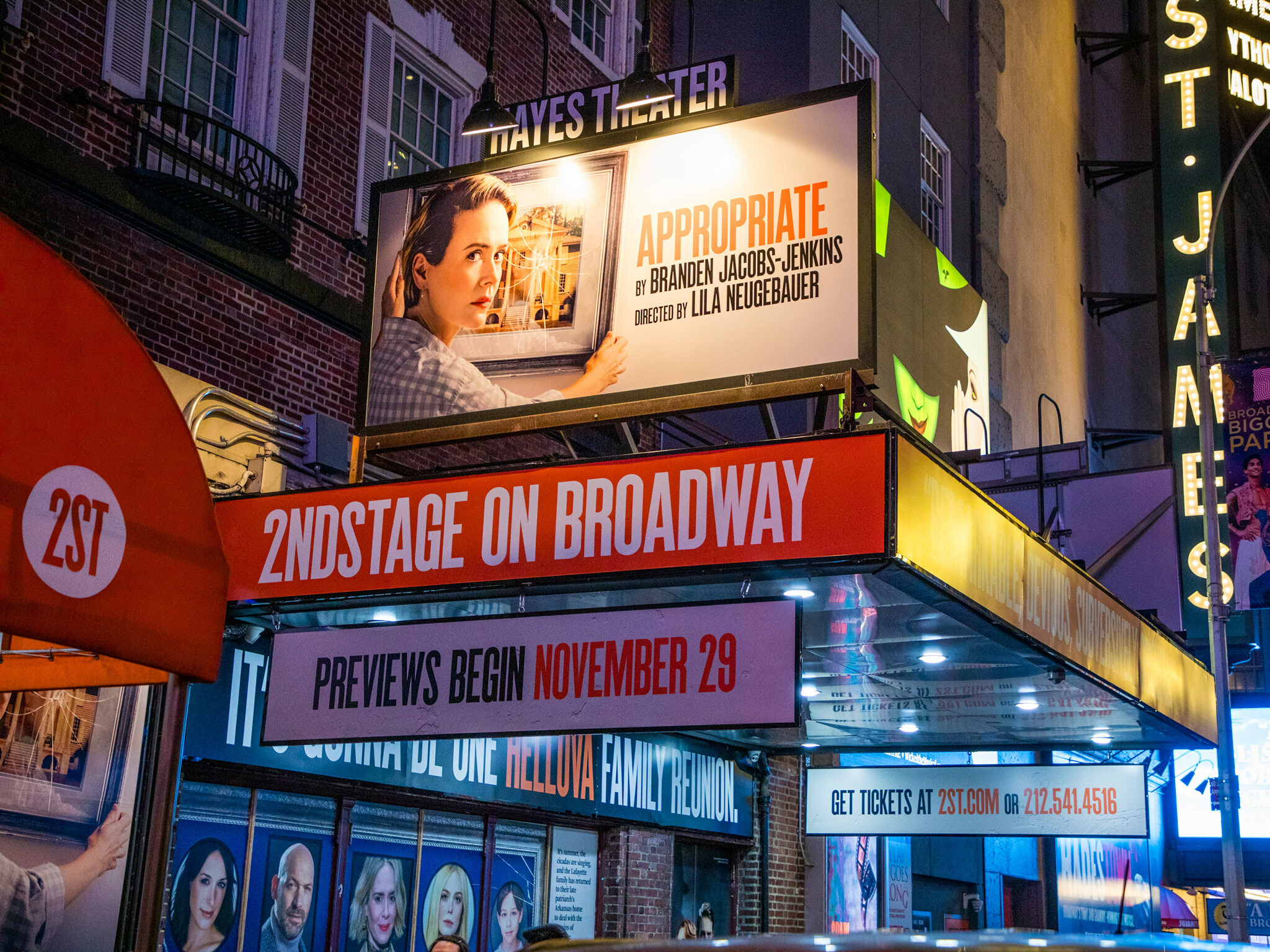Broadway History and Evolution: Appropriate Broadway

Appropriate broadway – Broadway theatre traces its origins to the late 18th century, when travelling performers and companies began staging plays and musicals in makeshift venues throughout New York City. Over time, these performances became increasingly popular, and dedicated theatres were built to accommodate the growing demand.
Timeline of Significant Events
- 1750: The first known theatre in New York City, the Nassau Street Theatre, is built.
- 1798: The Park Theatre opens, becoming the first permanent theatre in New York City.
- 1841: The first Broadway theatre, the Olympic Theatre, opens.
- 1890s: The Broadway theatre district begins to take shape, with the construction of several new theatres along Broadway.
- 1919: The Theatre Guild is founded, a non-profit organization dedicated to producing high-quality theatre.
- 1943: The first Tony Awards are presented, honoring excellence in Broadway theatre.
- 1960s: The Broadway theatre district undergoes a period of decline, with many theatres closing or being converted to other uses.
- 1970s: The Broadway theatre district begins to revive, with the construction of new theatres and the renovation of existing ones.
- 1990s: The Broadway theatre district becomes a major tourist destination, with millions of visitors each year.
- 2000s: The Broadway theatre district continues to thrive, with new theatres being built and new productions being staged every year.
Impact of Cultural and Social Factors, Appropriate broadway
The evolution of Broadway theatre has been influenced by a variety of cultural and social factors, including:
- Immigration: The influx of immigrants to New York City in the late 19th and early 20th centuries brought new audiences and new artistic influences to Broadway.
- Technology: The development of new technologies, such as electric lighting and sound amplification, has had a major impact on the way Broadway shows are produced and staged.
- Social change: The changing social mores of the 20th century, such as the rise of feminism and the civil rights movement, have been reflected in the themes and characters of Broadway shows.
Contemporary Broadway Landscape
Broadway theatre, the beating heart of New York City’s performing arts scene, continues to captivate audiences with its diverse array of productions and iconic venues. From grand musicals to thought-provoking plays, Broadway offers a vibrant and ever-evolving landscape.
Major Theatre Districts and Venues
The bustling theatre district of Times Square remains the epicenter of Broadway, housing a constellation of historic and modern venues. The Majestic Theatre, with its opulent Art Deco design, has hosted legendary productions like “The Phantom of the Opera.” The Minskoff Theatre, known for its massive stage, has been home to blockbuster musicals such as “The Lion King.” Beyond Times Square, other theatre districts have emerged, including the Lincoln Center and the Hudson Yards, each offering a unique blend of venues and productions.
Types of Productions
Broadway’s repertoire encompasses a vast spectrum of theatrical genres. Classic musicals, with their soaring melodies and unforgettable characters, continue to draw crowds. “Hamilton,” with its innovative hip-hop score and historical narrative, has become a cultural phenomenon. Contemporary plays, tackling urgent social issues and exploring the human condition, have also gained prominence. “The Inheritance,” a two-part epic by Matthew Lopez, delves into themes of love, loss, and the complexities of family.
Challenges and Opportunities
In the 21st century, Broadway faces both challenges and opportunities. The rise of streaming services and the proliferation of digital entertainment pose competition for live theatre. However, Broadway’s unique ability to create immersive and shared experiences remains its greatest strength. By embracing innovation, such as immersive technology and interactive storytelling, Broadway can continue to captivate audiences and adapt to the evolving entertainment landscape.
Broadway Audience and Demographics

Broadway audiences are a diverse group of people from all walks of life. However, there are some general trends that can be observed. The average age of a Broadway audience member is 40 years old, and the majority of audience members are female (60%). The median household income of a Broadway audience member is $75,000, and the majority of audience members live in the New York City metropolitan area (60%).
Factors Influencing Audience Attendance and Preferences
There are a number of factors that influence audience attendance and preferences, including:
- Age: Younger audiences are more likely to attend Broadway shows than older audiences.
- Income: Wealthier audiences are more likely to attend Broadway shows than poorer audiences.
- Location: Audiences who live in the New York City metropolitan area are more likely to attend Broadway shows than audiences who live in other parts of the country.
- Show type: The type of Broadway show also influences audience attendance. Musicals are more popular than plays, and comedies are more popular than dramas.
- Star power: Shows with big-name stars are more likely to attract large audiences.
- Reviews: Positive reviews from critics can help to boost audience attendance.
- Word-of-mouth: Positive word-of-mouth from friends and family can also help to boost audience attendance.
Efforts to Broaden the Appeal of Broadway
In recent years, there have been a number of efforts to broaden the appeal of Broadway to a wider range of audiences. These efforts include:
- Lowering ticket prices: Some Broadway shows have lowered their ticket prices in order to make them more affordable for a wider range of audiences.
- Offering discounts: Many Broadway shows offer discounts to students, seniors, and military members.
- Creating new shows that appeal to a wider range of audiences: In recent years, there have been a number of new Broadway shows that have been created with the goal of appealing to a wider range of audiences. These shows include musicals such as Hamilton and Dear Evan Hansen, and plays such as The Curious Incident of the Dog in the Night-Time and Oslo.
- Outreach programs: Some Broadway theaters have outreach programs that work to bring Broadway shows to underserved communities.